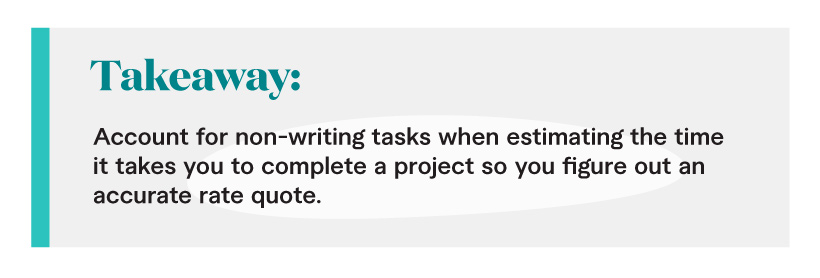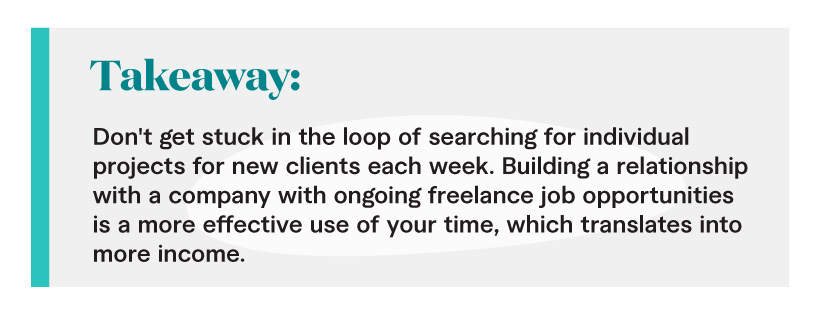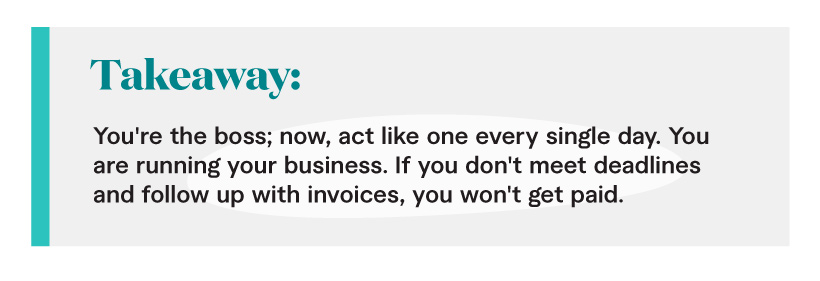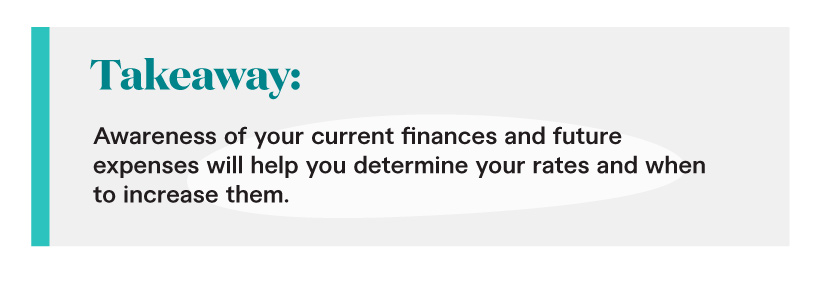Whether you’ve been freelancing for years or your first project proposal just landed in your email inbox, learning how to become a successful, profitable freelancer comes down to knowing how to set freelance rates and raise them over time, all while meeting your income needs and valuing your skills.
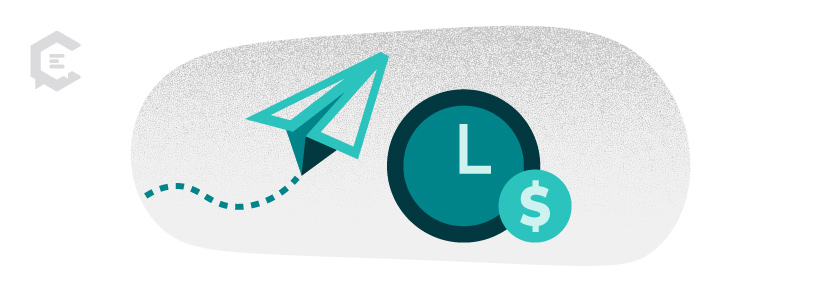
How to Set Freelance Rates for Contract Work
Determining freelance rates in the freelance writing industry has become increasingly more difficult. Due to high demand and more and more media professionals adopting a gig mindset toward their careers, there is no longer a standard rate card that makes sense across the board.
After all, it’s not merely magazine features or line-by-line copywriting that’s farmed out these days — it’s so much more. From a 2,000-word (or more) SEO deep dive to writing podcast copy and creating a game plan for interactive Instagram stories — a writer’s job description continues to transform and expand.
Freelance rates are subjective
Executive agility coach and author Nancy Capistran shares, there is no perfect answer on what you should be charging. “Keep in mind that there are only so many hours in the week/month/year to earn money. So being smart about finding that healthy balance for work hours and pay rate,” she adds.
Balance. What that means for you will differ from your freelance friends. For example, if you have kids to take to school, and a house to maintain, your time and energy for work don’t stretch as far as your friend who lives in an apartment with no children.
Drafting your freelance writing rate
A good starting place is to work backward. How much money do you need to make each month to cover your core living expenses, savings, self-employment taxes, business expenses, and other necessities? And, how many hours do you have available (and want) to work per week? Remember, as a freelancer, you call the shots. There’s no more 9-to-5.
You can work as many or as few hours as you want or need to hit your income goals. Start by dividing your monthly income goal by the number of hours you will dedicate to work per month to get an hourly freelancing rate.
Next, estimate how long a specific project will take you to complete. Multiply that number of hours by your hourly rate to get a per-project rate. Easy peasy! Now you have a number to quote to prospective clients that you know allows you to earn the income you need to stay afloat.
Get feedback from your writing peers
Branding expert Wendi Weiner shares that the ability to compare and contrast your rate with freelancers who work with similar clients will open your eyes and guide your finances. This helps you to know if you’re invoicing for far too much — or too little.
How long you’ve been filing articles or working for clients makes a difference too. After all, if they’ve invested in you for many years and you know their voice and mission, it’s more cost-effective for them to keep you on their roaster of freelancers. So, prepare to raise your rates every year or two to keep up with inflation while maintaining your contracts. Here’s how.
When It’s Time To Raise Your Freelance Rates
As you get the hang of quoting your freelance writing rates and taking on projects, you’ll eventually discover that you can work faster or produce better copy, which means it’s time to give yourself a raise. Value your work and skills!
It’s also time to raise your rates when:
- Your expertise has increased. Maybe you took a course to extend your content marketing knowledge. Or, you wrote a book. Perhaps you took on a highly visible client that made the news and gave you kudos for your work. Capistran notes when your proficiency strengthens, your rates should rise.
- Your client wants more. You started writing for their blog — and then they decided to move forward with SEO. Now, they’re interested in a newsletter. Building a healthy rapport with a client is beneficial, but it also means they’ll demand more and expect you to deliver.
- Your workload is heavy. You’ve been working well with a client for almost a year now, but in that time, you’ve taken on new brands. And you’ve started writing for three more publications — that pay you far more. In fact, you feel as if you’re overflowing with assignments and running out of time to meet them all. This is when you could consider asking for a raise.
How to Make More Money as a Freelancer
Ask any freelance writer you know about how they make ends meet, and chances are high they’ll present a laundry list of their countless gigs that, when added together, actually make a sustainable income.
Even though many publication staffs continue to shrink and the days of $2/word pieces are few and far between, it is possible to accumulate wealth as you check off magazines from your byline bucket list. But it takes time — and often, a shift in your attitude.
In addition to calculating your livable freelance income rate, and giving yourself raises periodically, be aware of the value you provide, the types of clients you take on, how you view your freelancing/conduct business, and how you manage your finances. These factors affect your income.
Be aware of your time, and its value
Depending on the story or project, getting from assignment to payment is a time-consuming process. In addition to securing sources, transcribing interviews, optimizing content for the web, sometimes building the piece in the CMS, going through editing rounds, and, eventually, seeing the direct deposit come into your inbox, you’ve likely logged upwards of five or more hours on a single article.
Takeaway: Account for non-writing tasks when estimating the time it takes you to complete a project so you figure out an accurate rate quote.
Choose your clients carefully
Freelancing, you’ll discover one-off projects and ongoing relationships with clients who provide a constant stream of projects. The latter are often referred to as anchor clients and fuel full-time freelance writers who want dependable income month after month.
Takeaway: Don’t get stuck in the loop of searching for individual projects for new clients each week. Building a relationship with a company with ongoing freelance job opportunities is a more effective use of your time, which translates into more income.
Maintain a professional business presence
You’re running a writing business. If it helps, banish “freelance” from your lingo and use “small business” instead. Be the reliable writer your clients can count on. Share your business hours as needed. Complete projects on time. Send invoices promptly. Operating professionally attracts professional interaction, on-time payments, and steady income.
Takeaway: You’re the boss; now, act like one every single day. You are running your business. If you don’t meet deadlines and follow up with invoices, you won’t get paid.
Stay aware of your financial situation
Finally, if you want to value your work and elevate your income over time, you must have a financial plan. Sure you’ve calculated your freelance rate, but how often will you announce rate increases? Are you including a budget for future purchases (writing workshops, a new car, etc.) in your monthly income goals? Sit down and map out a game plan for your business and personal income needs at the start of each year, then align your business to those needs.
Takeaway: Awareness of your current finances and future expenses will help you determine your rates and when to increase them.
Speed Up Your Freelance Success!
When most writers decide to turn their passion into their full-time careers, it is a major personal investment. Not only are you going out on an — often unsteady — limb, but you are putting yourself out there many times, with fear of rejection. It’s something many writers face, even with decades of experience.
Trust in yourself, your skills, and your value.
As a freelance writer, growing a full-time career can take a while. But, there are ways you can speed up your success. For example, if you join our Talent Network, we can help pair you with top brands that match your expertise and skill level. Get started today to level up.



